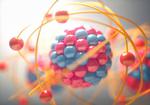Other

“An EU initiative has developed a robust, durable and low-cost self-cleaning coating. This new product will help improve solar energy generation efficiency. Photovoltaic (PV) systems, which harvest sustainable and clean energy from the sun, accumulate dirt or particles like dust …

“According to scientists, graphene can generate clock speeds that transcend today’s GHz limitations. Here’s how. Graphene – a one-atom-thick layer of hexagonally arranged carbon atoms – is the thinnest and strongest material known to man and an excellent conductor of …

“Scientists have made significant progress in the design of vital components used in hydrogen fuel cell vehicles. Improved features will lower production costs and help create a clean automotive future. With hybrid and all-electric battery-powered cars now becoming mainstream, hydrogen …

“Novel system achieves significant reductions in energy consumed for heating and cooling electric car interiors. The drive for more energy-efficient electric vehicles © Smile Fight, Shutterstock Technological developments and the increased focus on alternative sources of energy have led to a …

“You may think that they’ve been around forever and you wouldn’t be wrong. Railway sleepers, the rectangular blocks that can be seen under railroad tracks, have not evolved much over the years. An Italian SME is looking to …

“A group of scientists developed a new energy-saving optical receiver with rapid power-on/off functionality. Data infrastructures are increasingly strained by the rapid development in new technologies – from 5G to the Internet of Things – where the demand for bandwidth-hungry applications …

“Researchers have developed a new molecule magnet design that would bring high-density, nanoscale data storage into the realm of possibility. Single-molecule magnets (SMMs) have been attracting a lot of attention recently. This is because of the increased demand for faster …

“An ERC Proof of Concept grant is enabling Aalto University to work on a novel concept for a tunnelling accelerometer using graphene’s unique properties. If successful, the project could appeal to industries producing high-precision applications. Accelerometers are used in …
News Introducing a new robotic class with abilities out-performing existing machines or even biological organisms

“Swarm intelligence refers to natural and artificial systems comprising many individuals that coordinate using decentralised control and self-organisation. The EU-funded project, has designed the first self-assembling multirobot system able to display sensorimotor coordination equivalent to that observed in monolithic …

“Scientists supported by EU funding, have created a graphene-based device where electron spins can be injected and detected, with unprecedented efficiency and at room temperature. This opens up possibilities for the realisation of applications which use spin based logic and …

“With around 90% of the worlds data generated in the last two years alone, there is a pressing need for more efficient data storage and transfer. The EU-funded SPIN-PORICS nanocomposite prototype may have a solution. Electronic devices which …

“Many EU-funded projects are working towards advancing robotics to assist people with overcoming societal challenges, such as providing care for the elderly or providing disaster relief. An academic who worked on one such project has now argued that author …
